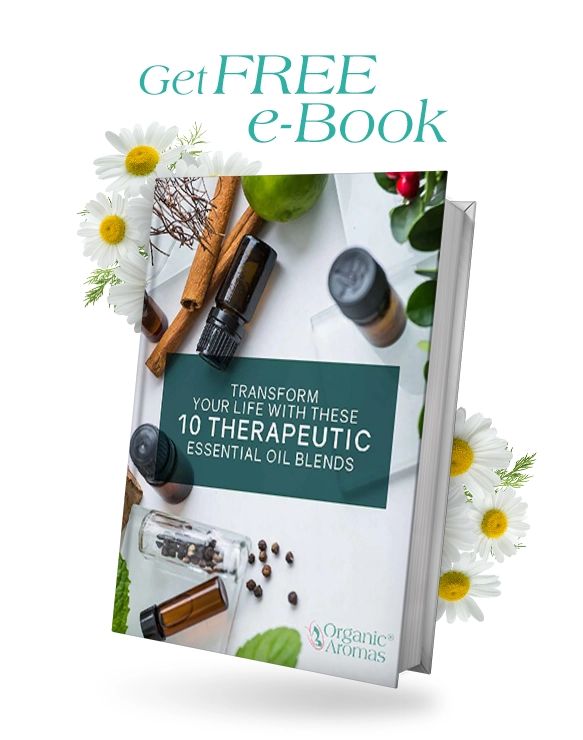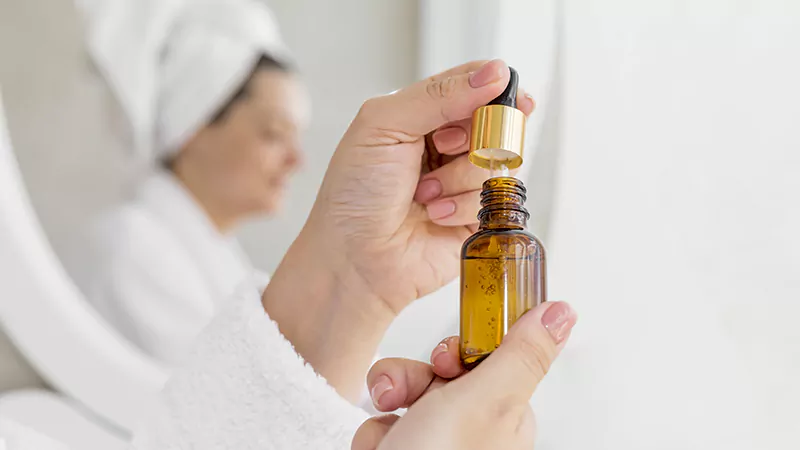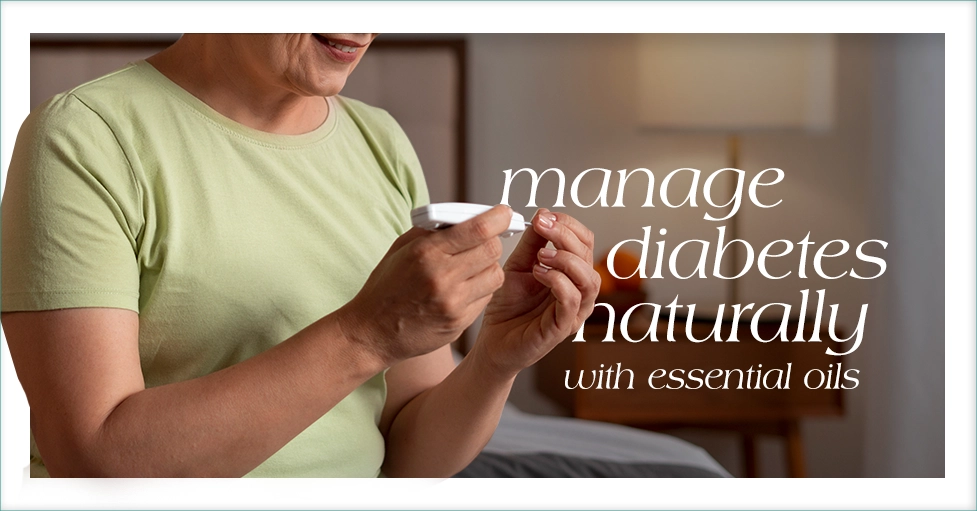Manage Diabetes Naturally with Essential Oils
Diabetes is one of the most dangerous diseases out there. While things like cancer can certainly be serious, diabetes is a long-term condition that can bring about a wide range of health issues ranging from loss of limbs to heart failure and beyond. In short, it’s something that has to be treated and managed properly in order to live the longest, healthiest life possible.
The seriousness of diabetes means that it has to be managed with help from a medical professional at all times. However, there are natural remedies and steps that can be taken as well which will help dramatically. Taking a look at some of the essential oils and how they can fit into a natural diabetes regimen is well worth doing.

What is Diabetes?
Diabetes is a condition wherein the body either doesn’t make or doesn’t use insulin properly. Type 1 diabetes is a problem with no insulin production, while type 2 is when the body fails to utilize insulin that is made correctly.
Overview of Diabetes: Type 1 and Type 2
Diabetes Mellitus, commonly known as diabetes, is a chronic metabolic disorder characterized by high blood sugar levels over a prolonged period. The two most common types are Type 1 and Type 2 diabetes, each with distinct causes, symptoms, and complications.
Type 1 Diabetes
Type 1 diabetes, previously known as juvenile diabetes or insulin-dependent diabetes, is an autoimmune condition where the body’s immune system attacks and destroys insulin-producing beta cells in the pancreas. Pancreatic beta cells are key for insulin production. As a result, the body cannot produce insulin, leading to elevated blood sugar levels.
Causes
While the exact cause of Type 1 diabetes is unknown, it’s believed to be a combination of genetic predisposition and environmental factors, including certain viruses that may trigger the disease.
Symptoms
Common symptoms include frequent urination, increased thirst and hunger, unexplained weight loss, fatigue, and blurred vision.
Complications
Long-term complications can affect multiple organs, including heart, kidneys, nerves, and eyes. It also increases the risk for stroke and Alzheimer’s disease. High blood pressure that is triggered wreaks havoc.
Affected Demographics
Type 1 diabetes can develop at any age but is often diagnosed in children, adolescents, and young adults.
Management
Management involves regular insulin therapy, monitoring blood sugar levels, maintaining a healthy diet, and regular physical activity.
Type 2 Diabetes

Type 2 diabetes, formerly known as adult-onset or non-insulin-dependent diabetes, is a chronic condition that affects the way the body metabolizes glucose (sugar). In this type, the body either resists the effects of insulin or doesn’t produce enough insulin to maintain normal glucose levels. Insulin resistance is the hallmark of this condition.
Causes
Causes of Type 2 diabetes include genetics, lifestyle factors such as lack of exercise and obesity, and insulin resistance.
Symptoms
Symptoms are similar to those of Type 1, but are often less noticeable, resulting in many people living with the condition without knowing it for several years.
Complications
The complications are similar to those of Type 1 diabetes, but Type 2 diabetes might also lead to hearing impairment and obstructive sleep apnea.
Affected Demographics
While it can occur at any age, Type 2 diabetes is more common in people over 45 and those who are overweight or obese.
Management
Management includes lifestyle changes like healthier eating, regular physical activity, and weight loss. If lifestyle changes aren’t enough, diabetes medications or insulin therapy may be necessary.
Both types of diabetes are serious conditions that require ongoing medical attention and self-management for optimal health. Early diagnosis, lifestyle modifications, and appropriate treatment can help manage the symptoms and reduce the risk of complications.
Gestational Diabetes

Gestational diabetes is a type of diabetes that occurs only during pregnancy. It’s similar to Type 2 diabetes in the way the body becomes resistant to insulin, a hormone that regulates the movement of sugar into your cells.
Causes
Like other types of diabetes, gestational diabetes affects how your cells use glucose. During pregnancy, the placenta produces high levels of various hormones that impair the action of insulin in the cells, raising blood sugar. As the baby grows, the placenta produces more of these hormones, making it even harder for insulin to do its job.
Symptoms
Most women with gestational diabetes don’t have any symptoms. The condition is often detected during routine blood sugar testing. In rare cases, excessively thirsty or increased urination might make diabetes symptoms to be noticed.
Complications
If not treated, gestational diabetes can cause problems for both mother and baby, including premature birth, baby having high birth weight, increased risk of type 2 diabetes in mothers, and the risk of obesity and diabetes in babies later in life.
Affected Demographics
While any woman can develop gestational diabetes, some women are at greater risk. Risk factors include being older than 25, a family or personal history of prediabetes, excessive weight, nonwhite race, and previous delivery of a baby weighing more than 9 pounds.
Management
Treatment for gestational diabetes aims to keep blood glucose levels equal to those of pregnant women who don’t have gestational diabetes. Treatment usually includes special meal plans and scheduled physical activity. It may also include daily blood glucose testing and insulin injections.
After childbirth, blood sugar levels usually return to normal, but women with gestational diabetes have an increased risk of developing type 2 diabetes later in life.
Please consult with your healthcare provider for personalized medical advice.
Building Your Natural Diabetes Treatment Regimen

Sign Up to Get Your e-Book Here
Essential oils are just one component of treatment. Along with blood sugar monitoring and use of insulin injections, you can utilize numerous steps to set up better diabetic management for yourself. Steps to consider will include:
- Changing your diet to ensure the best level of health. Monitoring sugars eaten is key to controlling diabetes.
- Regular exercise and weight loss can help dramatically. In particular, losing weight can help with type 2 diabetes and can even reduce or eliminate the need to use insulin in some cases.
- Avoiding alcohol is important as well, since alcohol contains numerous sugars that can have a negative impact on the management of diabetes.
Talk to your medical professional for additional guidance on the subject, but the fact is natural steps can often be the keys to getting the results you need for better controlling diabetes. You can’t ignore medical attention or the need for insulin, but the right steps can make it easier to manage the disease and its symptoms – and its risks.
Essential Oils For Diabetes
Can you manage diabetes naturally using essential oils?
Essential oils are potent plant extracts often used in aromatherapy and other complementary therapies.
Some research suggests that they may have potential benefits for managing diabetes, particularly in easing symptoms or complications related to the disease. However, it’s important to note that essential oils cannot cure diabetes or replace conventional treatments.
Here are some ways essential oils might help manage diabetes:
Blood Sugar Regulation: Certain essential oils like cinnamon, fenugreek, and cumin are believed to help regulate blood sugar levels.
A 2017 study found that a blend of cinnamon, fenugreek, and oregano oils improved insulin sensitivity and fasting glucose levels in diabetic rats..
Stress Reduction: Stress plays a significant role in sugar management. Essential oils such as lavender, chamomile, and ylang-ylang are known for their calming properties and can be used in aromatherapy to reduce stress and anxiety.
Managing Complications: Diabetes can lead to various complications, including nerve pain and poor wound healing. Some essential oils like geranium, eucalyptus, and frankincense may help relieve neuropathic pain, while lavender oil and tea tree oil possess antimicrobial properties that can aid wound healing.
If you’re considering using essential oils as part of your diabetes management plan, it’s crucial to do so under the guidance of a healthcare provider to ensure safety and effectiveness.
Also, remember that essential oils are highly concentrated and can cause skin irritation or allergic reactions in some people. They should always be diluted before use and should never be ingested without professional guidance.
Along with the steps above, you can use certain essential oils to help manage diabetes. Here are some of the most helpful essential oils;
- Cinnamon – Cinnamon oil is one of the most widely studied oils in terms of diabetic management, and research has shown that it can be effective in helping to manage pancreatic functions and promoting better weight loss results. It may also help lower blood glucose levels when used correctly.
- Coriander – Coriander oil may also be effective at controlling blood glucose. It has been found to increase insulin secretion and also help with digestive issues.
- Ylang-ylang – This essential oil is a good choice for diabetics who have irritability or mood swings. It can help calm the mind and body and bring focus back to your life. Additionally, it has been found to have a positive impact on blood circulation and on lowering overall blood pressure – two problems many diabetics have.
- Lemon – Lemon or lemongrass essential oils are another option that can help relieve tension and stress while also helping promote better circulation. They can also help to ward off symptoms of the cold, flu, and other illnesses. In the process, it makes it easier for diabetics to heal from different conditions.
- Thyme – This essential oil can be a major antiseptic and can even help prevent the development of cardiovascular disease – something common in diabetic patients. However, it’s not a good option for those with high blood pressure and as such should be used carefully.
- Lavender – This essential oil can help to calm the mind and body, making it easier for you to relax. Additionally, early studies are finding that it could help lower glucose levels in some people when taken internally. Taking or ingesting essential oils internally is serious and certainly requires input from a trained, experienced professional. This is not something we promote.
- Lemon balm essential oil is another great option.

How to Use Essential Oils

The most effective way to administer essential oils to a diabetic is to use a Nebulizing Diffuser. Nebulizers diffuse pure essential oils in their most natural form without dilution or heat that can alter the properties of the essential oils.
Another option is to massage the oils into the skin. Make sure to dilute pure essential oils with a carrier oil such as sweet almond oil or virgin coconut oil. When applying diluted essential oil topically use only 2-3% of pure essential oil mixed with the carrier oil. Only diluted essential oils must be used on skin.
Each of the options above is worth considering, but should only be a part of your total diabetic management regimen. Consult with your doctor and try out natural options, and you’ll be on your way to better diabetes control.
Benefits of Using Essential Oils for Diabetes Management
Using essential oils to manage diabetes is a complementary approach that has potential benefits.
Controlling Blood Sugar Naturally: Certain essential oils, such as cinnamon and coriander, may help regulate sugar levels. Internal use of culinary cinnamon essential oil seems to be particularly effective. A qualified doctor must administer any therapy that proposes to ingest essential oils.
Reducing Inflammation: Type 2 diabetes is often associated with increased inflammation. Lemon balm (Melissa officinalis) contains antioxidant flavonols that may help reduce this inflammation.
Stress Management: Managing a chronic condition like diabetes can be stressful. Essential oils used in aromatherapy, such as lavender, can help ameliorate this stress.
Antimicrobial Properties: Some essential oils, such as lavender, have anti-inflammatory, antibacterial, antiviral, and antifungal properties that can help prevent complications related to diabetes.
Enhancing Sensitivity to Insulin: A blend of essential oils has been found to lower circulating glucose levels and enhance insulin sensitivity, suggesting the potential for these natural products in diabetes treatment regimen. This promotes healthy blood sugar levels.

Join Our Exclusive Member Club Discount!
Final Word
Essential oils can potentially offer several benefits for individuals managing diabetes, though they should not replace traditional treatments and should be used under the supervision of a healthcare provider.
As with any complementary therapy, it’s crucial to discuss the use of essential oils with a healthcare provider to ensure they’re used safely and effectively.



In my country we have a very popular Black Cumin Oil product for diabetes. Enriched Black Cumin Oil that contains Food Grade essential oils of Coriander, Cinnamon, Black pepper, Copoiba Blasem, Grapefruit, Lemonbalm, Turmeric, Aniseed, Casia, an a few other oils. The composition is 7.5% essential oils and 92.5% Black Cumin. The recommended dosage of 2ml per day provide 0.15ml essential oil, which is 3 drops of essential oil. This can be used internally of rub into feet and palm of hands. Also very good for blood circulation. (1ml Essential oil equals about 20 drops.)
We order it from [email protected]
You mentioned some of these need to be used “correctly”, do you have more information as to how many drops? How are they consumed and used and where they are applied? You mentioned the nebulizer – do you add every one of the oils you talked about at once or spread them out? Where could one go to get some idea as to how to use these great oils and where they can be most effectively applied? Thanks in advance for pointing me in the right direction! Thanks!
If your putting essential oil in liquid to drink how much do you do?
In my country we have a very popular Black Cumin Oil product for diabetes. Enriched Black Cumin Oil that contains Food Grade essential oils of Coriander, Cinnamon, Black pepper, Copoiba Blasem, Grapefruit, Lemonbalm, Turmeric, Aniseed, Casia, an a few other oils. The composition is 7.5% essential oils and 92.5% Black Cumin. The recommended dosage of 2ml per day provide 0.15ml essential oil, which is 3 drops of essential oil. This can be used internally of rub into feet and palm of hands. Also very good for blood circulation. (1ml Essential oil equals about 20 drops.)
We order it from [email protected]
Exactly where do you apply the oil to the body. Thank you
Thank you for this informative article!
I have been experimenting with oils for quite some time and will be using this information for family and friends who suffer from diabetic problems!
It is wonderful to find a natural approach to explore!
That’s information I didn’t know. I’ll pass it on to a friend.
I will have to share this information with my mother in law who is diabetic. Thank you!!
My dad suffers from diabetes. Would LOVE to gift some of these oils to him to improve his day to day life.
Really interesting info. I’ve just started getting into oils myself (I have 3) and am loving the journey so far!
There are so many wonderful oils out there and so many wonderful uses for them. You gave a few above and showed me how they can help with your illness. Thanks for the information.
It’s amazing to see the variety of problems that be helped by essential oils. I never would have thought of diabetes.
Thank you for the very informative article. I especially love infographics. Will definitly pass this onto someone I know who could use this.
If someone is allergic to Lavender, then what would be a good substitute?
Thank you for the healthy tips!
Interesting article!
Great article, lots of great info.
Great information about Diabetes and treatment for it using Essential Oils. So sorry for people who have diabetes but glad to know that there are ways to reduce the symptoms of it. Thank you for the information you provide for us.
Thank you for showing me another way my nebulizing diffuser can help!
I have inlaws that are diabetic and i will definitely share this info with them, thank you for sharing.
Thank you for these useful informations!